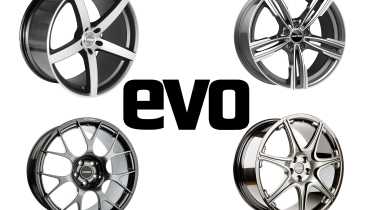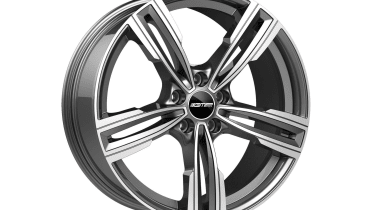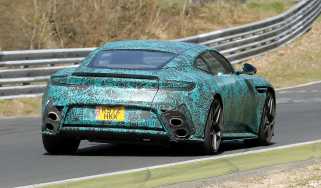How to choose the best aftermarket alloy wheels for your car
Advances in design software, manufacturing techniques and materials are keeping the aftermarket alloy wheel manufacturers in the game.
The major car makers have a pretty good strike rate in styling alloy wheels for the cars that matter. Think air-cooled Porsche 911s, many a Ferrari, fast BMWs galore, RS Audis, Ford Escort XR3 and Puma, Lancia Delta Integrale, Peugeot 205 GTI 1.9 – and others you’re already shouting about.
That might have made things difficult for aftermarket alloy wheels makers, but when a wheel becomes ubiquitous, there are always those who want to stand out from the crowd, even if that crowd congregated to celebrate good taste.
> Aftermarket car suspension explained
It’s slightly different today. Car makers have cottoned on to the financial potential of offering a choice of alloys, in a variety of sizes, and many of those wheels are good lookers. Why trawl the aftermarket when it’s so easy to just tick another box on the options sheet?
Yet the aftermarket prevails. Despite the choice offered by the OEMs, its repertoire remains far greater. And it has another weapon: size. Darryl McNey, group sales director of UK-based Rimstock, which produces Team Dynamics wheels amongst others, explains: ‘What people expect from the aftermarket, and what the aftermarket delivers, are larger wheel sizes in either diameter or width. It has become harder though, as the OEMs have increased their sizes; we’re in an era where small hot hatches come on 18s as standard. So we have to stay one step ahead. It’s now quite normal for us to produce 23in wheels and 24in is the new ambition of the market. Such extreme sizes are in part driven by the fact that commercials – vans and pickups – are the biggest growing sector of the market.’
Huge wheels may grab eyes and headlines, but the aftermarket still develops new products around the ethos of ‘lighter, faster, stronger’. Ever-more sophisticated CAD programs have helped enormously in pursuing that goal, identifying areas of the wheel where it’s possible to remove metal – and thus save weight – without affecting its structural integrity. Look closely at modern wheels and you may see evidence of this in the slenderness of the spokes and thinness of the wheel rim; you might notice grooves channelled into the sides of the spokes and, on the rear, spot where large amounts of metal have been removed from, say, the wheel’s hub where it mates to the car’s hub. And this more intimate knowledge of structural influences has allowed wheel designers to exercise more creative flourish.
> How to prepare your car for a track day
Traditionally, forged alloy wheels, fashioned from a single extruded aluminium billet using intense pressure and heat, which creates a product that’s very light and supremely strong, have represented the pinnacle of aftermarket desirability. But they come with a steep price tag. ‘It’s an expensive and very small, specialised segment,’ reveals McNey. But a process called flow-forming – claimed by Speedline to be its own, yet now practised by most big players and several smaller ones – provides the lightness and strength benefits of forging at a more reasonable price.
With flow-forming, a wheel is cast in the normal fashion but with a thicker and narrower rim. While hot, it’s placed on a spinner and rotated at high speed; at the same time a shaping device that employs high-pressure rollers is brought to bear and, starting from just below the wheel’s outer face, moves downward, stretching the metal of the wheel’s rim downwards as it goes. The elasticity of the hot metal means it can be pulled out, like warm toffee, by a considerable amount, vastly increasing the width of the wheel. The spinning and stretching process alters the alloy’s grain, making it stronger and in turn allowing a thinner rim section to be used – this thinner rim section requires less aluminium so weighs less, with savings of up to 25 per cent compared with a regular cast alloy item.
The most exciting development in aftermarket wheels for the past few years comes from West Country-based Dymag, although it’s far from an everyman product. The company’s Boxstrom wheels use a carbon-composite barrel and rim, onto which a forged aluminium centrepiece is attached using titanium bolts. The hand- built wheels are claimed to be 25 per cent lighter than their forged OEM equivalents, with a 30-40 per cent lower moment of inertia. The latter affects how quickly a wheel accelerates and decelerates, and how its rotational force impacts the steering in a corner.
> Aftermarket car brake upgrades
The BAC Mono and new Fisker EMotion electric car are using the Dymag Boxstrom with their own bespoke forged alloy centrepieces, but the barrel and rim unit are designed in such a way that it’s relatively easy for other OEMs – and other aftermarket wheel makers – to create their own centrepieces.
Meanwhile, the industry continues its hunt for lighter, tougher alloys, new finishes (ceramic coatings and, in the case of Rimstock, two-tone colours), and further improvements in quality.





